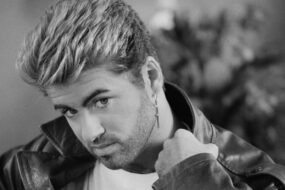

Not every artist in the world is looking to be at the front of the stage. As much as it might be fun to soak in applause at every opportunity, there are always those moments that pay off in the studio that make everything worthwhile. And while Pino Palladino might not be the most high-profile artist in the world by any stretch, any pop release that he has played on in the past 30 years has been touched by a rhythmic god.
From day one, Palladino was already a virtuoso playing in fusion groups, but when working with everyone from Paul Young to Jeff Beck, he found his groove as someone who was always looking to serve the song. He could lay into a funky jam with D’Angelo or play a heartbreaking ballad with John Mayer, but every step of the way, he’s listening to make sure he gives the perfect ear candy for a section rather than soloing for the hell of it.
And as much as his contemporaries could have easily made their living pounding out the root notes, Palladino was always about making a little something extra. He was a technician every time he locked in with the drummer, and even if he didn’t take credit for everything he played, anyone looking to jam with him on the bandstand knew that they were going to have an uphill battle ahead of them.

Every member of Fleetwood Mac has had those moments where they would have rather been anywhere else other than the studio. The entire fallout from Rumours left everyone in shambles, so going back into the record and coming to face-to-face with your former partner would have been like going to couples therapy with none of the proper closure. Lindsey Buckingham dealt with it by lashing out in anger, and Stevie Nicks made mystical tunes to help cope with the pain, but Christine McVie could always put together a song that could break your heart.
While she started off playing blues rock, Christine turned herself into one of the greatest pop songwriters of her time. Despite being in the background of some of their greatest hits like ‘Go Your Own Way’, Christine was the Swiss Army knife whenever it came to getting the perfect single, to the point where she had the best songs by their 1980s period when she started writing tunes like ‘Everywhere’ and ‘Little Lies’.
Even on albums that had no business being anywhere close to good, like Time, Christine was always the anchor of the group, making sure that everything went smoothly. It’s a tragedy that she couldn’t stick around for their comeback album, Say You Will, in the 2000s, but had it not been so long, we could have been in for the successor to albums like Tango in the Night that we all wanted but never got.

There’s no right way to prepare to play to millions of people. Most performers spend years cutting their teeth before finding their calling playing to the back of a stadium, but being able to engage with a crowd of that size is something that you’re either born with or you have to wait years to be comfortable with. But for someone as reserved as Freddie Mercury was off the stage, he never seemed to find any musical platform he didn’t feel comfortable on when performing with Queen.
Aside from the fantastic music that he made, Mercury will forever be known as the one who taught a clinic on how to work an audience at Live Aid. From his massive vocal runs onstage to moving between piano and guitar during the show, Mercury was like a fish in water when most of us would be shaking in our boots, to the point where it seemed awkward when he gave interviews and was very introverted.
But that’s because Mercury never saw the pre-emptive fear that everyone has when working on his music. Whether it was the musical masterstroke of ‘Bohemian Rhapsody’ or giving his final performances on Made in Heaven, Mercury was an entertainer in every sense of the word, and if it meant having to face some of the most challenging vocal runs imaginable, he was more than up for the challenge.

The producer usually has the most important job when working on any classic record. He might not have to handle the pressure of promoting the album once everything’s over, but when listening to playback, they’re the ones that every artist is looking to for guidance and seeing what will make their song better. But for a band that was as firmly rooted in rock and roll history as ELO was, it’s hard to think of any place where Jeff Lynne could go wrong throughout his career.
Even when working with The Move, Lynne was slowly working on a way to make the best power pop music he could. And once the band found their calling making music that felt like it was from another galaxy, he applied every single lesson that everyone from John Lennon to Roy Orbison had to teach, from getting the pitch-perfect vocal harmony or making sure each chord hits at the right time to hit someone in their heart.
And it’s not like it went unnoticed, either. It’s one thing to be able to make music that everyone loves to listen to, but when The Beatles asked you to help them rearrange their final songs together, that’s a compliment worth more than any average form of flattery. This was the equivalent of being knighted in rock and roll, and even when working with artists like Jeff Lynne and Regina Spektor, Lynne always brought the same attention to detail to everything he made.

Most music fans like their taste divided into categories. If they like rock and roll, they will have their favourite records from The Beatles and The Stones, and if they are more inclined to play funk, they will typically pick up whatever Sly and the Family Stone or Parliament/Funkadelic record makes them want to dance the most. But for Prince, there’s no point in trying to put his music into one box throughout his career.
Sure, there are certain sounds that come and go throughout every one of his records, but on each release, Prince never had a particularly bad album to his name. Even on the albums that were made specifically to make a profit and were loathed by ‘The Artist’, there are still moments like Chaos and Disorder, which are better than any other alt-rock band could have imagined at the time.
But for anyone who looks at his discography and is immediately intimidated, all you need to do is look at the musical journey that happens on either Purple Rain or Sign O’ The Times. There are bands like the Eagles or the Grateful Dead that become synonymous with a particular type of music, but ‘The Purple One’ figured that the best way to keep things interesting is to pull from anything and everything he could get his hands on.

It almost goes without saying that any Beatle could have earned themselves a spot on this list. The Fab Four practically acted like a single entity when they were still touring, but when they branched out into four musical thinkers in the back half of their career, people barely realised that they had a pure supergroup on their hands before the term was even trendy to use. If there was one member who knew the ins and outs of what music was supposed to be, it was George Harrison.
Despite Paul McCartney continuing to be the living embodiment of everything music is, Harrison was always uniquely in tune with his music whenever he played. He only played music after The Beatles because he loved to do it, and outside of having fantastic arrangements, albums like All Things Must Pass and 33 and ⅓ each have a story to tell, whether that’s him detailing his spiritual journey or teaching everyone how to make a guitar properly cry with his signature slide guitar licks.
Even when playing on tunes by everyone from Badfinger to Belinda Carlisle, it’s easy to take one listen to one of his solos and realise it’s him. Because when you think about it, Harrison’s entire spiritual journey was about perfecting a relationship on Earth to communicate with God, and with no disrespect meant to Patti Boyd and Olivia Harrison, his purest expression of love occurred whenever he had a guitar in his hands.

As the Summer of Love came and went, the singer-songwriters were the ones who always left the best impact. It was one thing to listen to a band while stoned and getting some sort of contact high, but the true artists know how to level someone with only a few words and the right chords behind them. James Taylor may have been the essence of what the genre was made of, and Carole King wrote the rulebook before the genre had a name, but Joni Mitchell took her music into directions no one had thought possible.
Whereas most people were strumming away on cowboy chords, Mitchell was the complete package when she debuted with her ethereal open tunings. She knew exactly what she was doing when it came to music theory, and if she made music which left a lot of questions hanging in the air, her lyrics were going to reflect that state of mind also, whether that be her fallouts with her partners over the years or thinking about what this life was for in the first place.
Although not everything she made was necessarily the most radio-friendly tune in the world, Mitchell’s music always went the extra mile by teaching people how to have a greater understanding of her and music as a whole. She was always interested in connecting with art on a deeper level than the usual pop songs, and whenever someone gets rocked by her music, they are a much better musician at the end of that journey.

It would be delusional to think that we have accomplished everything the rock and roll guitar should do. This piece of wood with strings and pickups on it is a relatively new instrument in the grand scheme of things, and it didn’t take long for people like Tom Morello to stretch the limits of what it could do. But whereas Morello was a mad scientist behind the fretboard, Eddie Van Halen was the kind of musical god that made flash acceptable in the mainstream.
Although most guitar shredding was reserved for blues jams or prog rock at the time, Van Halen was everyone’s introduction to the next best guitar player in the world. Standing at less than two minutes, ‘Eruption’ made everyone’s jaws drop the second they heard it, to the point where it felt like Eddie had four hands when pulling off his tapping tricks. That kind of thing would work well as a party trick, but Eddie wasn’t looking to make some gimmick. He wanted to write music, and every subsequent album gave him more tricks to add to his arsenal.
From him smacking the hell out of the neck of his guitar on ‘Mean Street’ to using flamenco-style picking on ‘Little Guitars’, every song was nothing more than a new opportunity for him to work with the guitar in a different way. Most people would have to undergo intense training to get this good, but Eddie proved how far someone could go if they were deeply in love with their instrument.

Rock and roll was never meant to be the most sophisticated genre of music in the world. There were bands like The Beatles that could wow people with their strange sense of harmony, but before the Summer of Love began, most people still pictured rock and roll as the offshoot of the blues that Chuck Berry and Little Richard started. That was the kind of scene that Brian Wilson grew up in, but when he started going deeper into his mind, fans realised they were dealing with a rock and roll equivalent to Mozart.
Even when the Fab Four ended lapping The Beach Boys when making Sgt Peppers, Wilson had everything he needed to preserve his legacy on Pet Sounds and singles like ‘Good Vibrations’. He had made perfect symphonies when writing about surfing and driving cars, but this was when he started to delve deep into relationships and try to understand the inner workings of what brings us closer together.
Not all of the lyrics had to be the deepest thing in the world, but that didn’t matter so long as the harmonies were doing the work for him, whether that be the heartache on ‘God Only Knows’ or hearing every member of the band give him a base when he sings ‘Caroline No’. And considering the fact that he could write a beautiful string arrangement in the same time it would take most of us to make a halfway decent sandwich, Brian Wilson truly embodied everything that made people’s hearts flutter when they heard their favourite song.

There’s no question that all good rock and roll centres around the guitar. There are plenty of artists like Lemmy and Billy Joel who have made their legacy based on a completely different instrument, but if you think of the true fathers of the genre like Chuck Berry or Elvis Presley, all of them looked ten times cooler whenever they had that six-string draped across their back. Then again, the rest of the world would have to wait a few years before being greeted by a musical demigod.
Although The Beatles and The Beach Boys were the two opposing figures in rock history around that time, Jimi Hendrix arrived in England and proceeded to rewrite the rulebook of what the guitar could do. From the strange effects he used to playing the guitar with his teeth, every emotion a human can experience was unleashed when he played, whether it was the hurt in ‘The Wind Cries Mary’, the psychedelic bliss of ‘Purple Haze’, or the intense anger in ‘Machine Gun’.
And while music has advanced much further since the days of Hendrix, there’s a reason why everyone from Eddie Van Halen to Jeff Beck were focusing squarely on what he was doing whenever he performed. Because while a lot of people may try to be the best musician they can be whenever they step onstage, few can create such raw beauty on the spot and make it look like they weren’t even trying.









